Dominic Hellier started his career in visual effects 19 years ago at Iloura which later became Method Studios and now Framestore. He has worked on many films such as Priest, Mad Max: Fury Road, Peter Rabbit 2: The Runaway and The Tomorrow War.
What is your background?
I started with iloura as a tape operator straight out of university, 19 years ago, and have worked here ever since, in many roles, and through many incarnations, from iloura, to Method and now Framestore. My background is predominantly in 2D, currently as Compositing Supervisor and joint department head of 2D in Melbourne, and I was really excited to get the opportunity to oversee Method’s work on Spiderhead as the vendor VFX Supervisor.
How did you get involved on this movie?
I believe the work came to the Method group through Ryan Tudhope and the company’s connection with Director Joseph Kosinski from their stellar work on Top Gun Maverick. And with Spiderhead filming in Australia, it was a great opportunity to facilitate the VFX work from here as well, so the Melbourne office became involved.
How was the collaboration with Director Joseph Kosinski and with Production VFX Supervisor Ryan Tudhope?
I found the whole process really open and collaborative. The brief was always very clear, but I also felt like there was a lot of trust in us to bring solutions to the table and to be creative on this project.
What was their approaches about the visual effects?
They approached the project with a very clear design aesthetic and, for the Spiderhead facility in particular, the emphasis for us was attaining not only a photoreal result, but something that upheld that aesthetic and for the building to become a character in, and of itself. Whether we were talking about the facility, or the other, more FX driven aspects on the show, the guiding direction was always to ground the effects with real life references and examples.
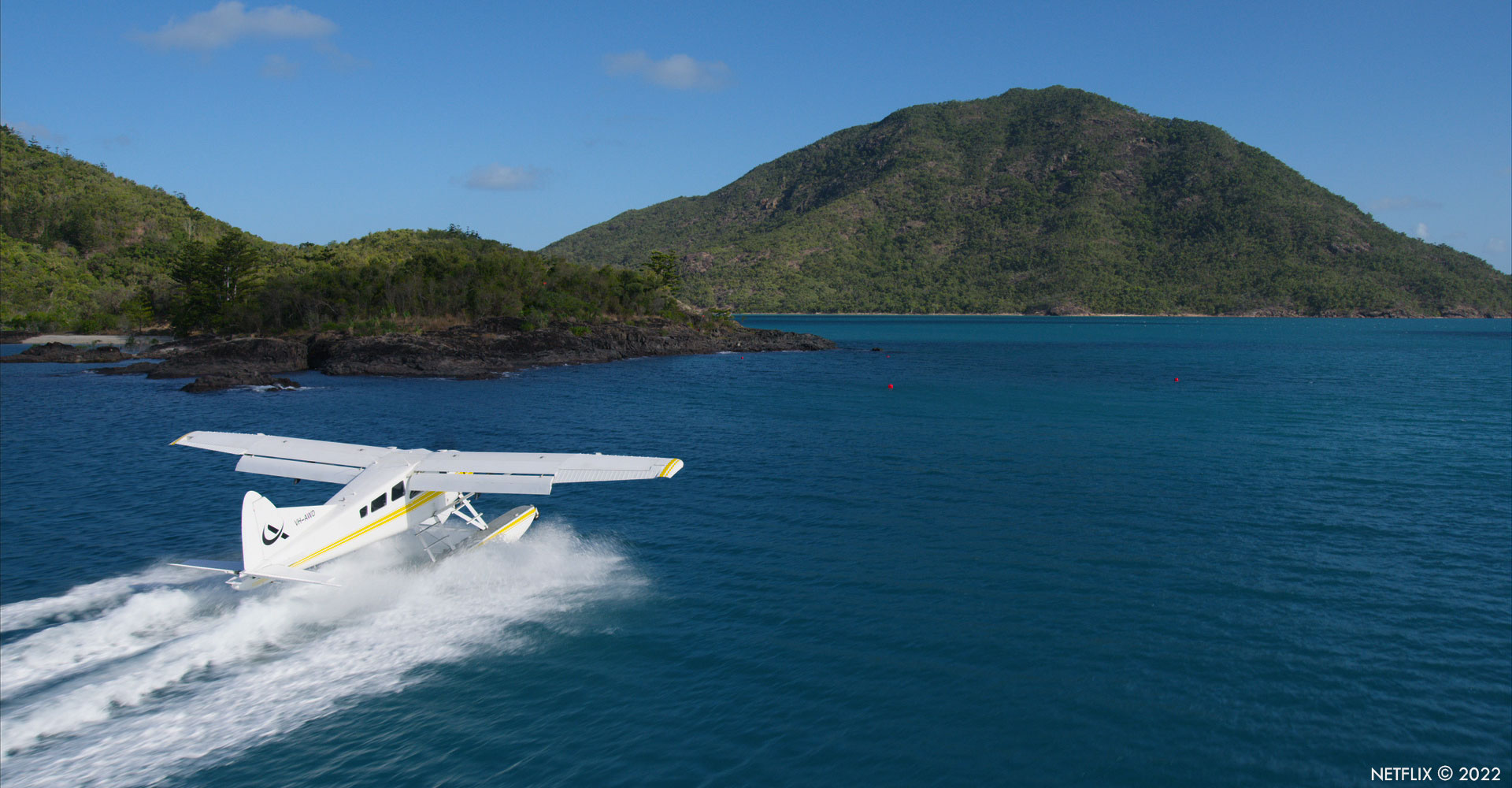
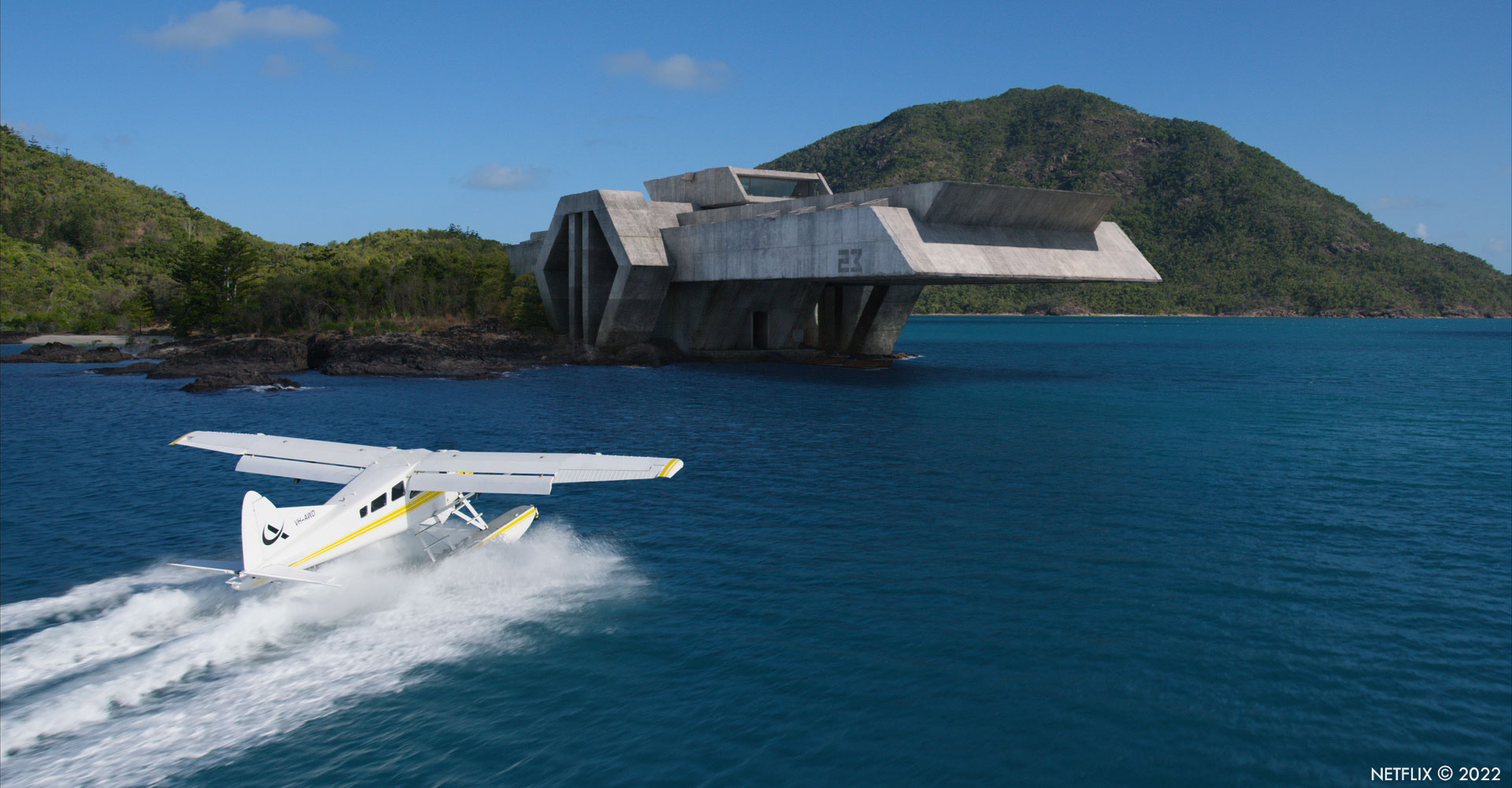
How did you organize the work with your VFX Producer?
Samantha Thrupp was our VFX producer on the show and she worked in close communication with the show VFX producer, Lynzi Grant to keep what was a pretty tight schedule, on target. We targeted things like the blood work, early blocking and FX passes for the crash sequences and our environment work at the front of the schedule, while we were iterating on the asset for the Spiderhead facility, so we could maintain momentum on shot work.
What are the sequences made by Method Studios?
This was one of those projects with a broad range of different visual effects call outs, scattered throughout the film. Our primary task was to build and integrate the digital asset for the exterior shots of the Spiderhead facility. We also completed digital assets for a float plane and speedboats, and sequences for a car crashing into a tree and exploding into flames, a harrowing scene of a character’s demise requiring the enhancement of practical blood effects, a lot of environment extensions of the beautiful Whitsundays location and some hallucinogenic treatments of footage for when characters are under the influence of the drugs being tested.
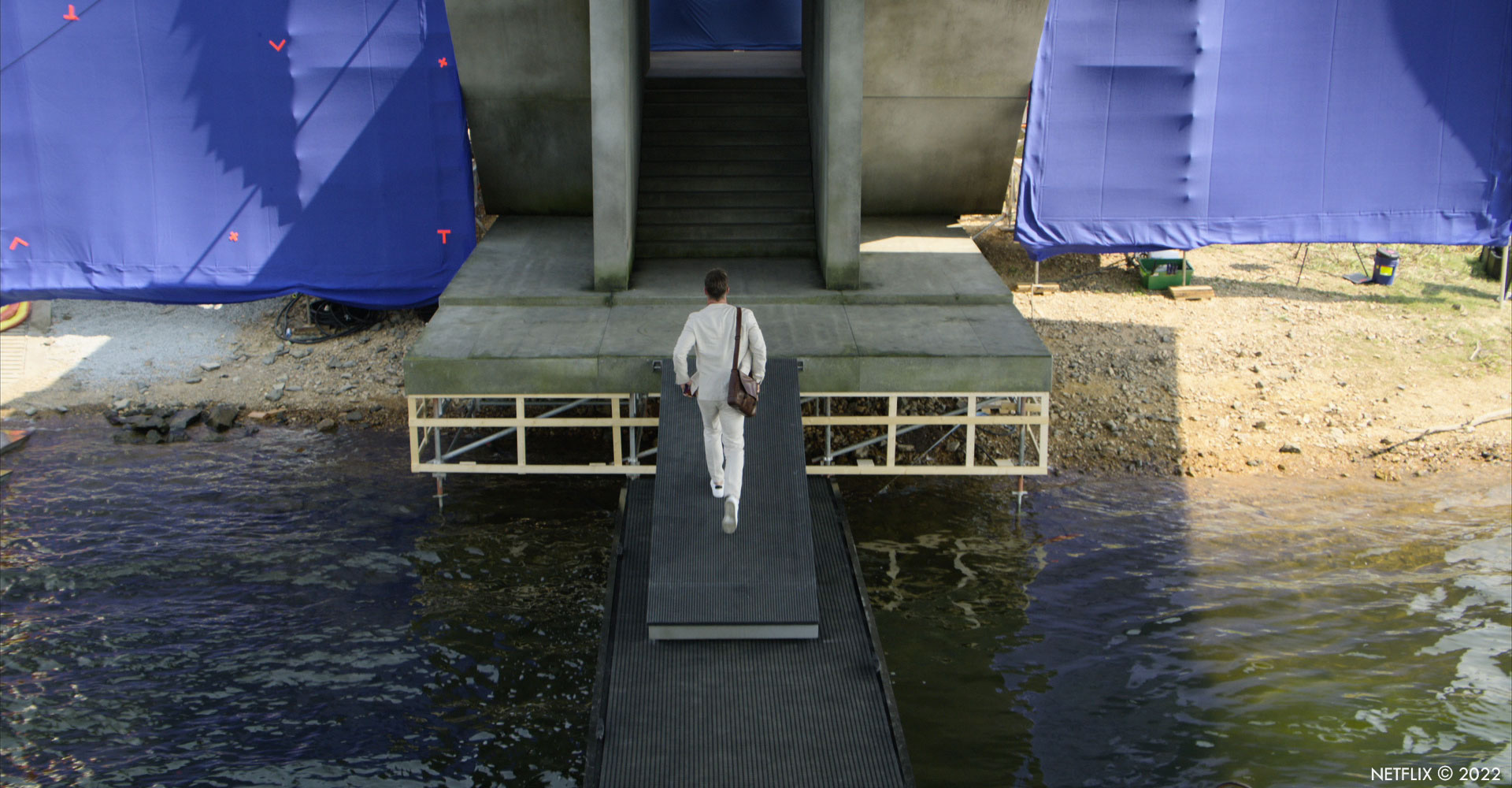
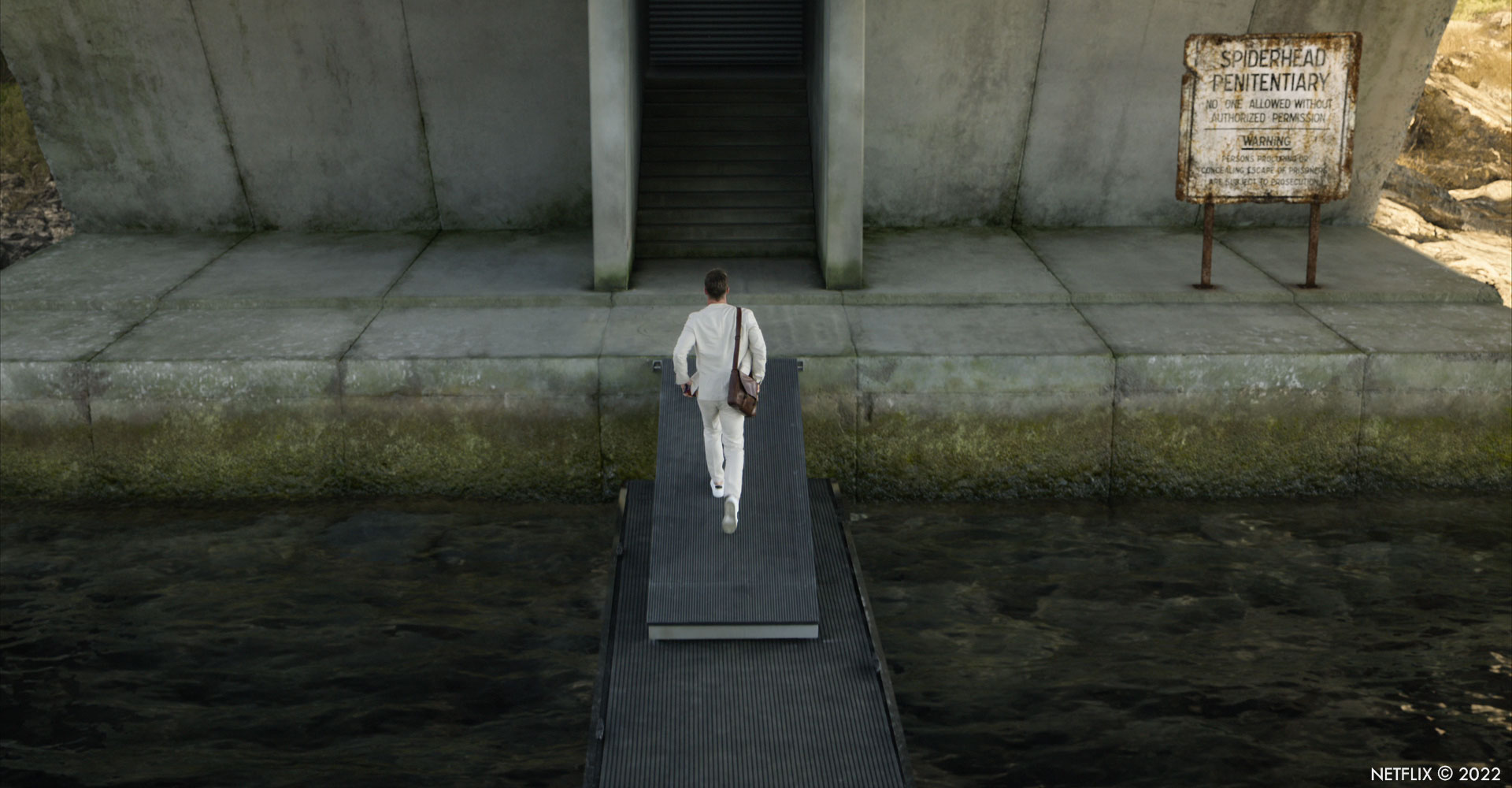
How did you split the work amongst the Method Studios offices?
Spiderhead was primarily completed in our Melbourne office, however our Vancouver office provided compositing resources to complete some of the sequences.
Can you elaborates about the design and the creation of the facility?
Being a Joseph Kosinski film, the Spiderhead facility came with a very clear aesthetic, and some great designs for the Brutalist architecture, that Joe had collaborated on with production designer Jeremy Hindle, and our assets team built a production asset from there. Through close study of a lot of real world references, we had a strong focus on introducing the subtle variation that comes with weathering on concrete from the various environmental factors such as wind, rain, the tidal water at its base, and the salt corrosion that would inevitably occur in such a location. It was a really fine balance between introducing the right amount of detail for realism, and not breaking the immense scale of the concrete monolith. This was done as a collaborative process between our asset/texture and look dev teams.
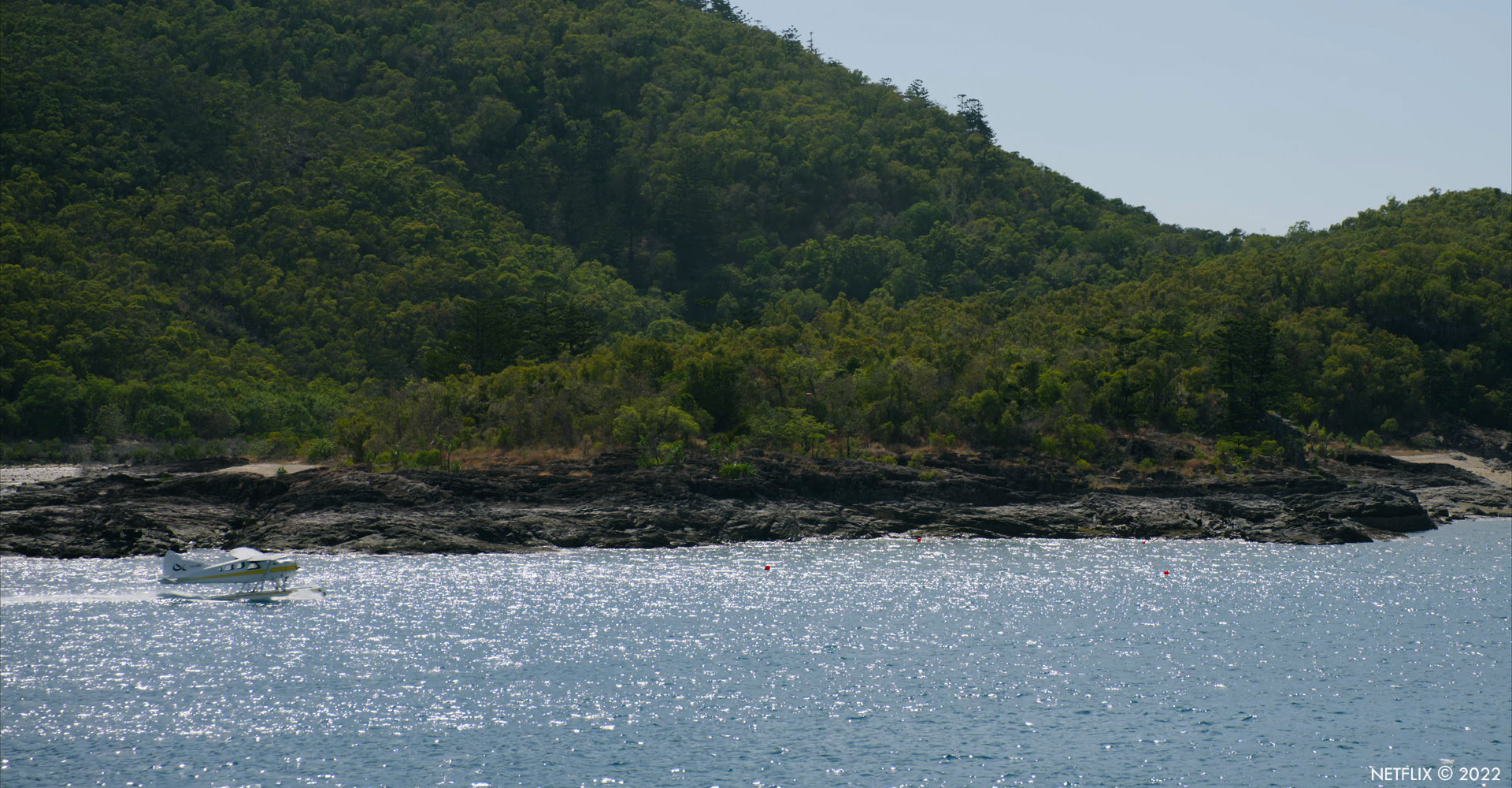
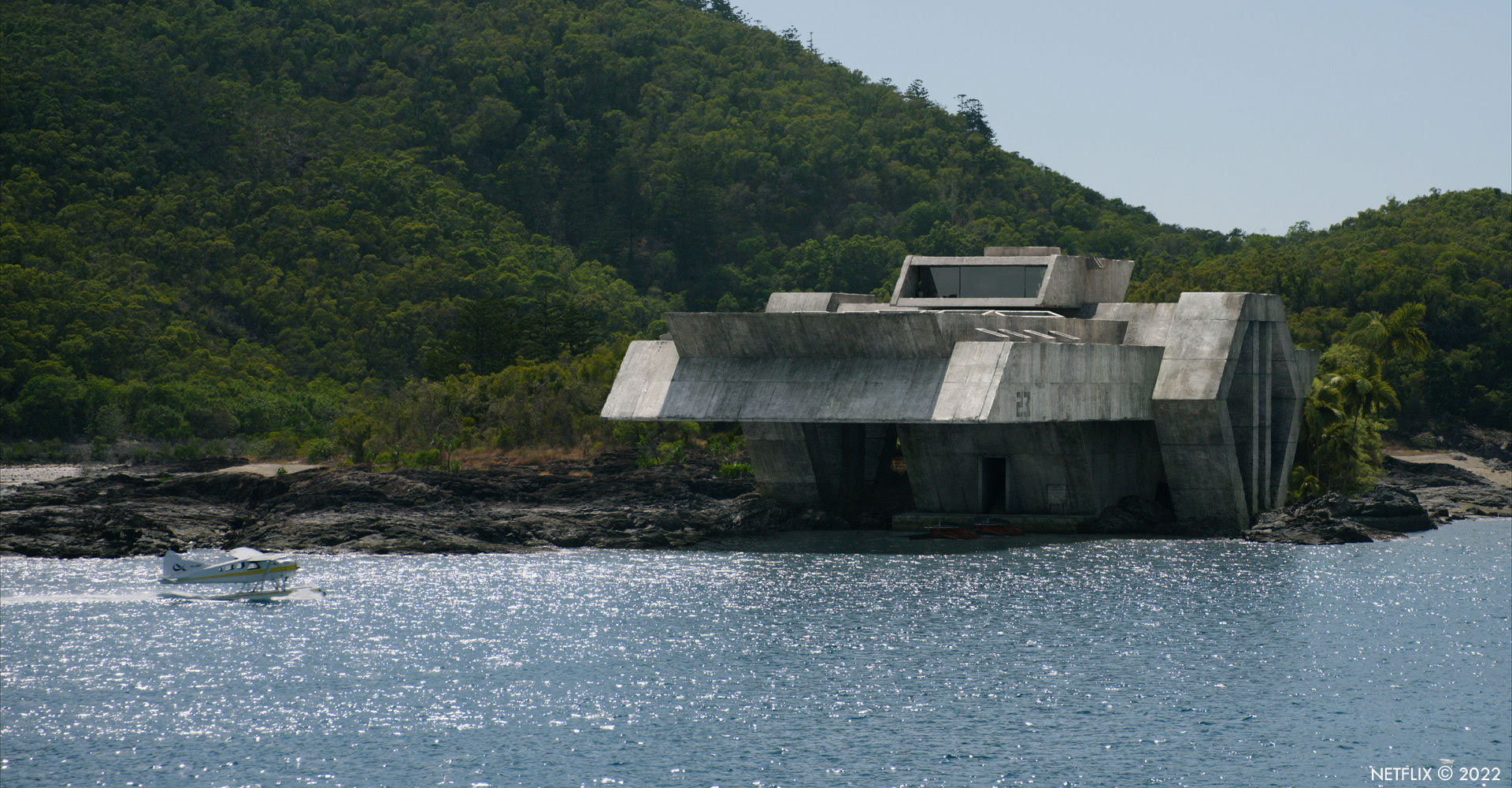
What kind of references and influences did you received for the facility?
Production provided us with a design handbook of the facility that Jeremy and his team had developed which gave us a great foundation to build upon (pun intended), and with the guidance of Ryan Tudhope, we traded various references of Brutalist buildings and discussed at length the various traits/signatures of that school of architecture. In addition to the weathering and texturing detail we were trying to introduce, brutalist buildings tend to have a very distinctive way they interact with light, and it was very important to Joe that we feature that aspect too, with racking, angular shadows and subtle reflected light bouncing around various surfaces.
Where was filmed the exterior shots for the lab and the island?
The bulk of the exterior locations were shot in the Whitsundays in Queensland, Australia. This area provided the idyllic tropical setting with crystal clear waters, surrounding islands and blue skies. The scenes showing the dock and entrance to the Spiderhead facility, were shot at a dammed lake also in Queensland and we then did environment extensions using matte paintings built from Whitsundays plates and photography to extend beyond the dock. Additionally, as there was no physical structure on set to cast shadows from the enormous overhang of the facility, we built the dock, boats and floatplane that we see at the entrance as digital assets, and rotomated them to the practical ones to have the appropriate shadow catching and composited these extended shadows over the practical vehicles and on the water and coastline.
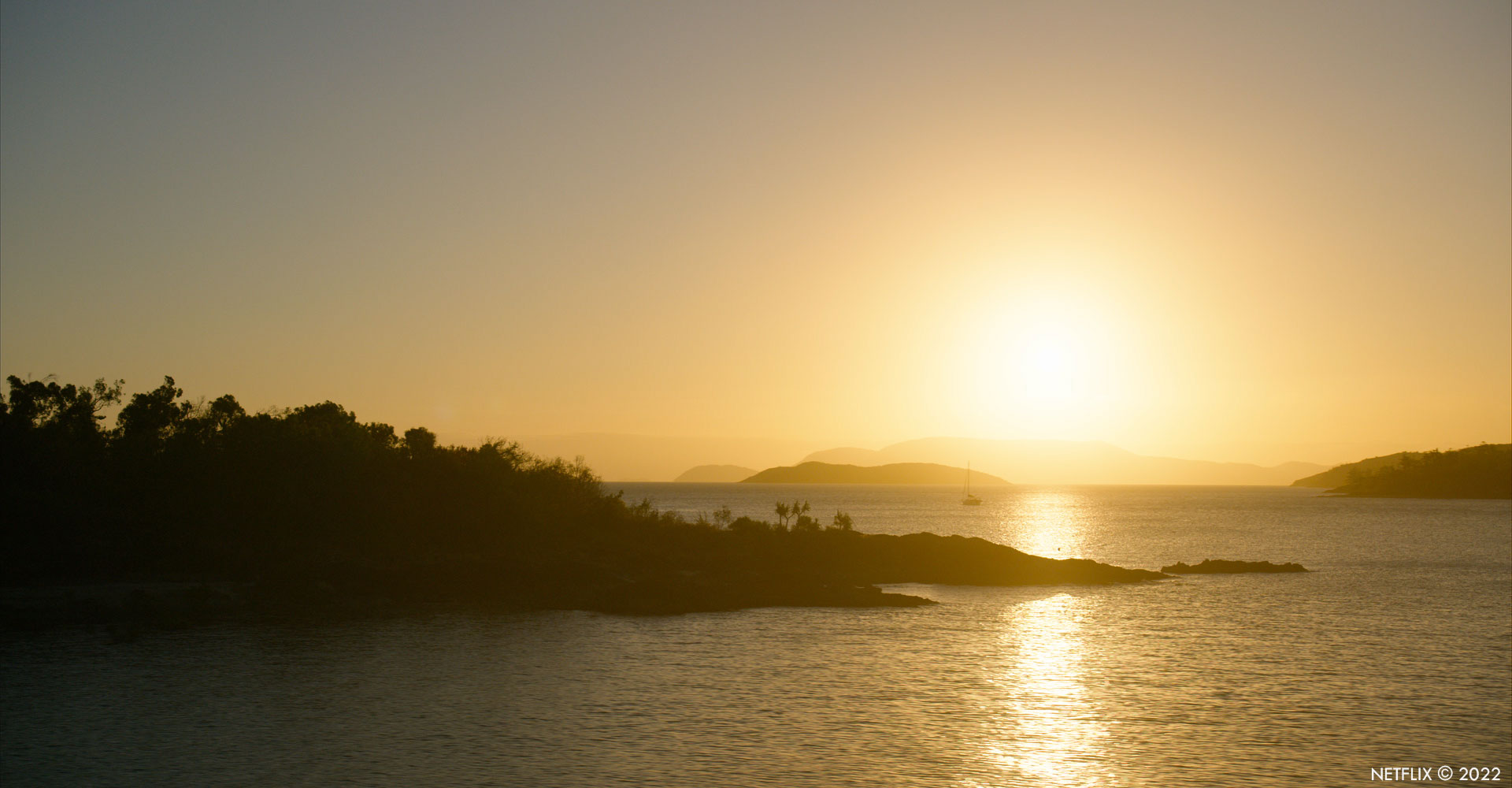
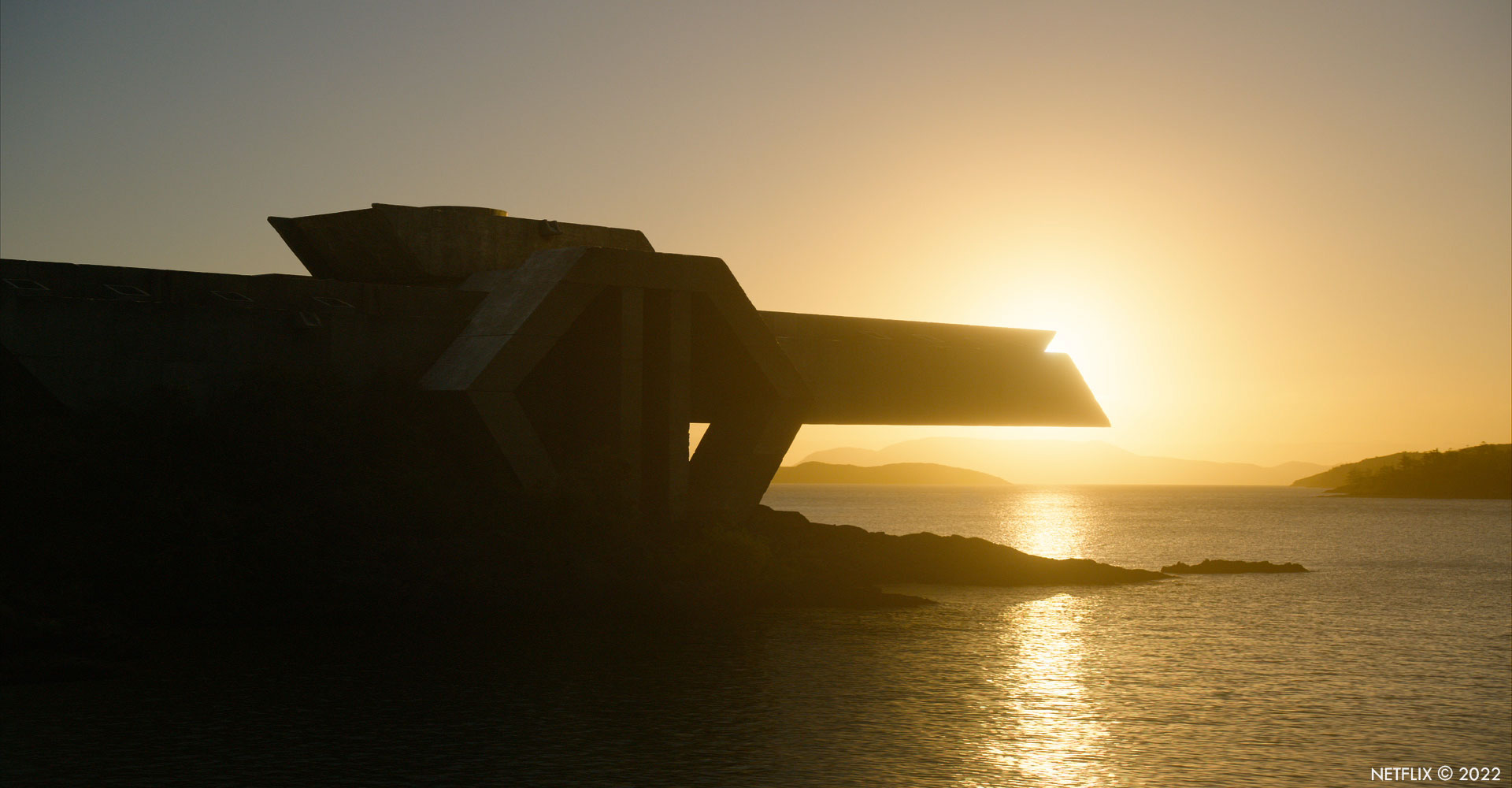
Did you use LED walls for the massive window in the facility?
No, this was shot using a traditional bluescreen setup, and filmed on the interior set, that was constructed in a sporting area in the Gold Coast. It was filmed with very careful arrangement of the lighting by DOP Claudio Miranda for the time of day and angle of the sun for the island location. This dictated which plate elements we could select from to do the environment extensions for Abnesti’s office view, to match in with the onset lighting.
Can you elaborates about the car and plane crashes?
The 2 crashes are key story points, for different reasons, so they were both important to the director and had different requirements in regards to our focus and approach.
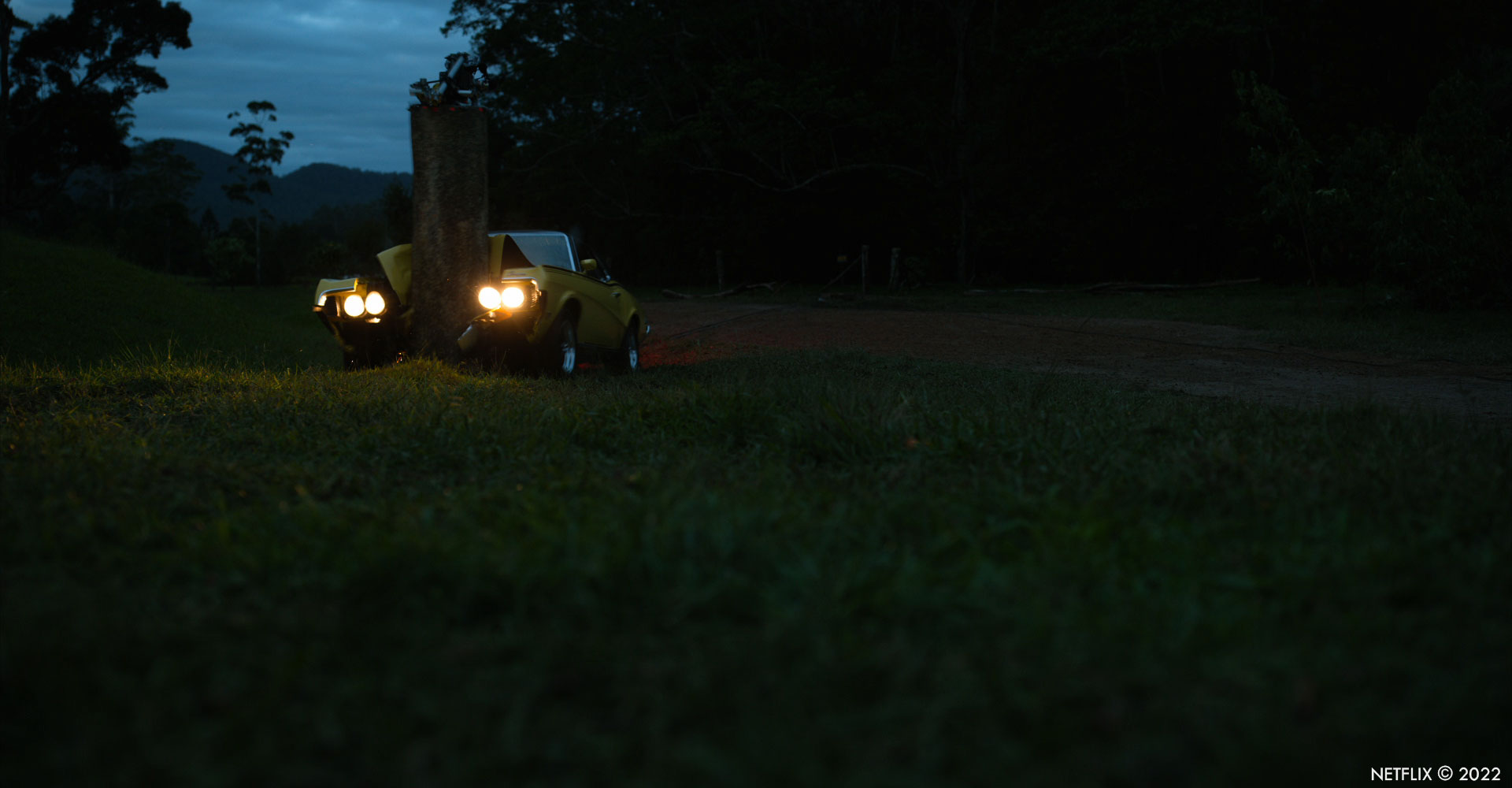
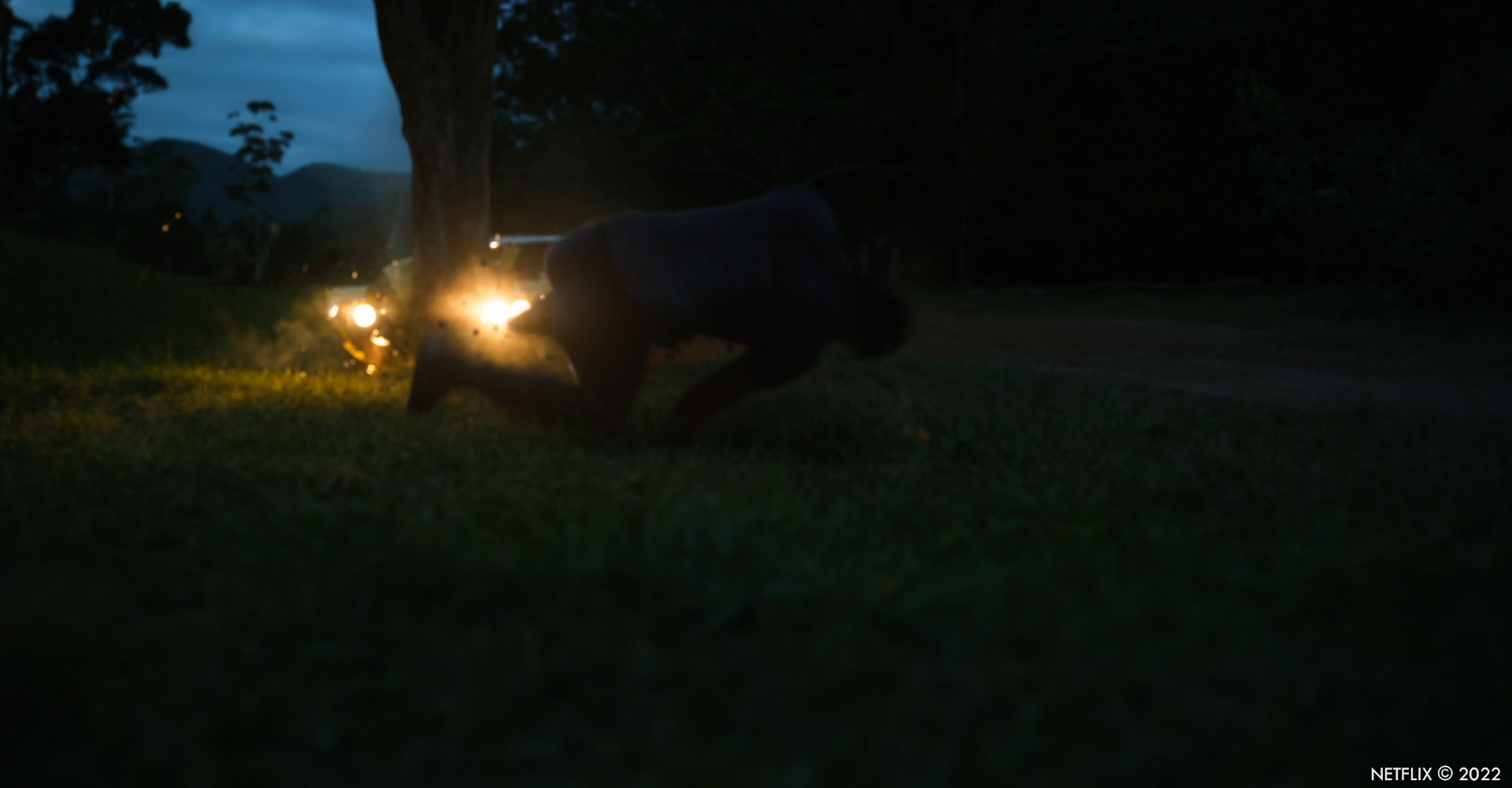
How did you create the FX for both crashes?
The car crash was covered across a number of shots. We began by rotomating a practical stunt car production had filmed crashing into a prop tree trunk. We retimed the plate and cache to a selected real world travel speed and, overseen by our CG supervisor, Nathan Ortiz, we then used this speed of the rotomation as the driving force for some ragdoll simulations, to establish the momentum and trajectory of a body being ejected through the windscreen at a high velocity. Once we had a good result from these sims, our animators took this and refined it for a more interesting performance, using reference from crashing/tumbling motorbike riders. This animation also had to tie into the photography of Miles Teller dropping into his final landing spot, close to camera. Added impact was introduced via supporting FX passes of shattering glass, smoke/steam and debris falling from the tree. In the shots following the crash, the car ignites and explodes, and we were asked to simulate an explosion fireball to augment the practical FX that had been caught in-camera. We built a digital asset for the tree so we could have the fire and smoke interact and interleave with branches, and simulated the shockwave of the explosion disturbing the foliage.
The plane crash, being on a much wider plate and occurring in the distance with other foreground focus/action, meant that, while we didn’t need as highly a detailed sim or render as we did for the car crash, we did need something that looked realistic in the bright daylight exposure and still caught the eye of the viewer at the right moment, to adequately tell the story of the climax of the film. With Joe and Ryan having just come off production for Top Gun Maverick, they were able to supply us with some great reference and direction for the type of explosion they were after.
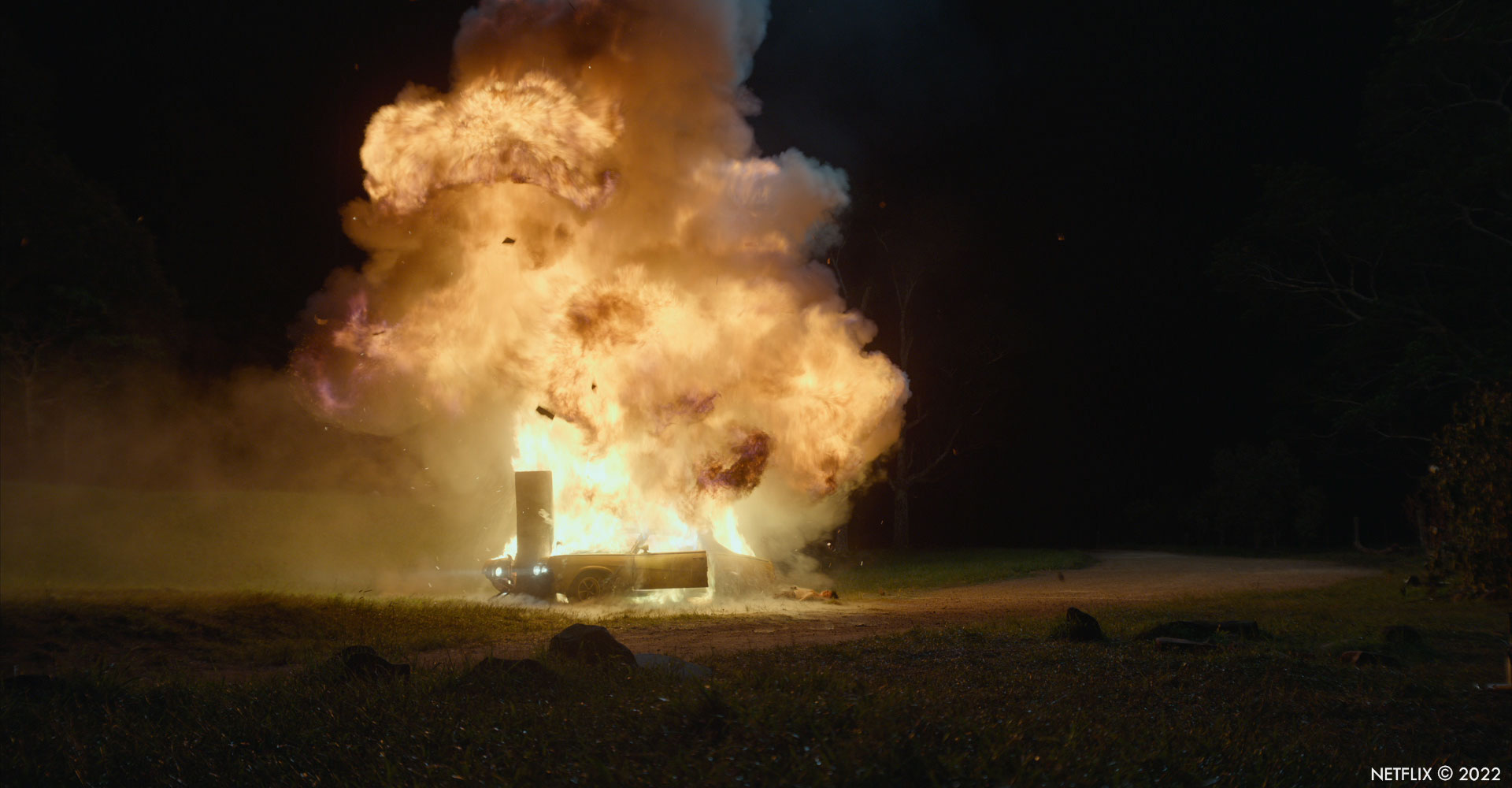
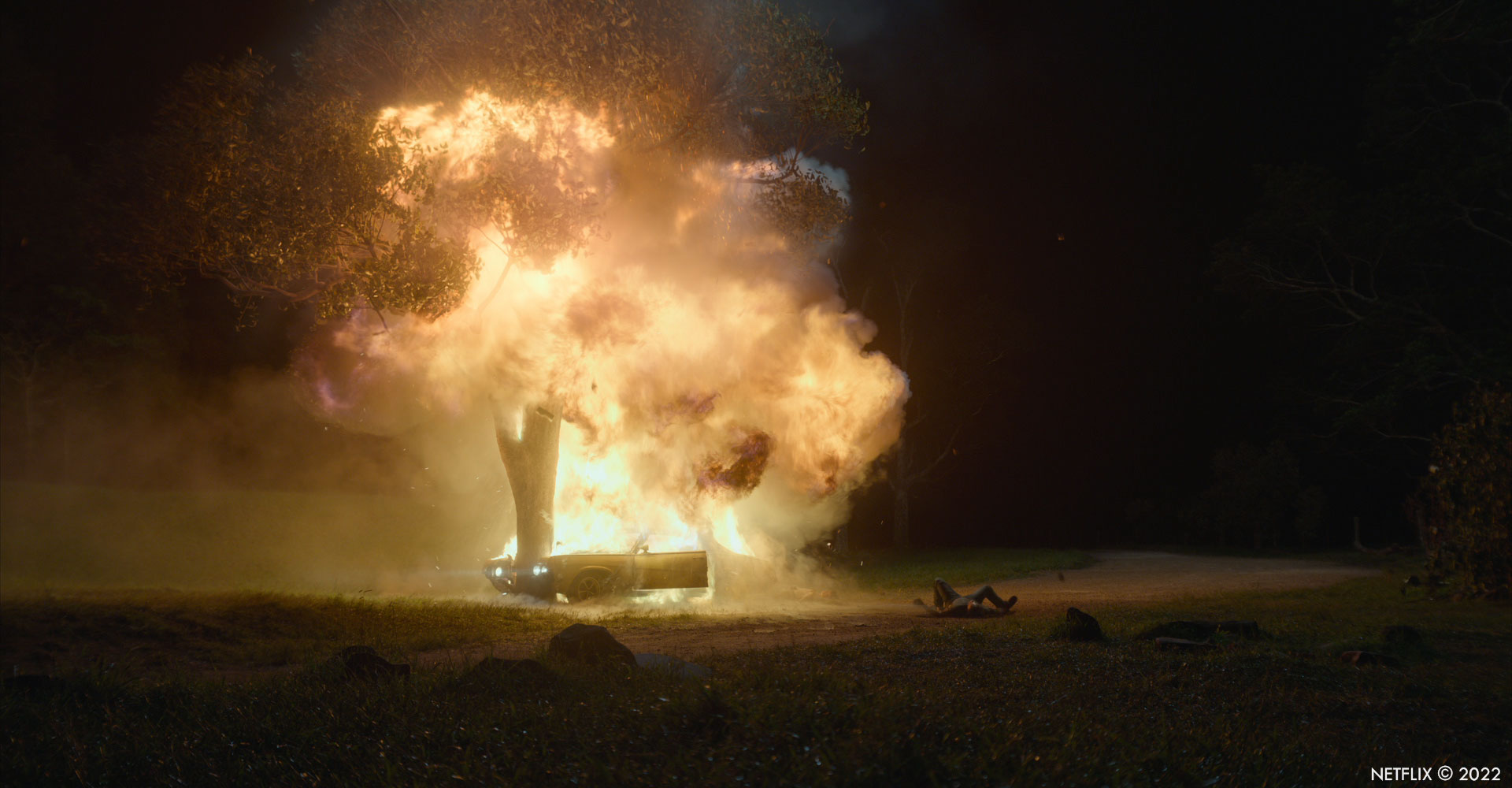
Can you explain in detail about the design and the creation of the motion graphics?
The motion graphics were generated by another vendor, and for the couple of shots we worked on that required motion graphics, they were supplied to us and we composited them.
How did you design and create the drugs effects?
The drug treatments were about creating a device that was clearly an hallucination, but also aesthetically appealing and grounded in something optical. So we referenced different kinds of lens flares and optical artifacts and landed on something that combined chromatic offsetting and a bespoke lens artifact related to a the « Sun Dog » phenomenon, but opted to make the elements dimensional so that we could have them overlap and animate to tie in with the camera movements.
Did you want to reveal to us any other invisible effects?
In addition to the building itself, we did quite a few environment extensions for views looking out from the Spiderhead exit. The sequence of Heather’s death was another call out for us. The scene had been covered largely with practical blood effects, but we were asked to augment these and add to the amount of blood. We ran fluid simulations to first replicate the viscosity and flow of the practical blood, then we expanded on this and ran one long simulation to cover off all of the shots in the sequence. We also did some shots of the float plane in flight and taking off, and an environment extension of an industrial wasteland for one of Geoff’s (Miles Teller) field trips. I certainly hope these are invisible effects!
Which sequence or shot was the most challenging?
Along with the choreography of the animation and FX from the car crash, I think striking the balance of detail and scale, and settling on the desired, subtle lighting response for the Facility was the most challenging part of the project.
Is there something specific that gives you some really short nights?
Not from this show, specifically. I may have woken in the middle of the night with ideas for certain shots! But nothing was particularly stressful, because we received such great direction and guidance via feedback from Joe and Ryan.
What is your favorite shot or sequence?
I am super proud of the work the team did on the facility as it is seen from all angles, some very close up, and there really was nowhere to hide on that asset. And all of the departments contributed to produce some great, subtle work to integrate the building into the natural environment and the photography. I really loved how it ended up looking in the sunset shots and some of the odd angles we see it in during the escape scene towards the end of the film.
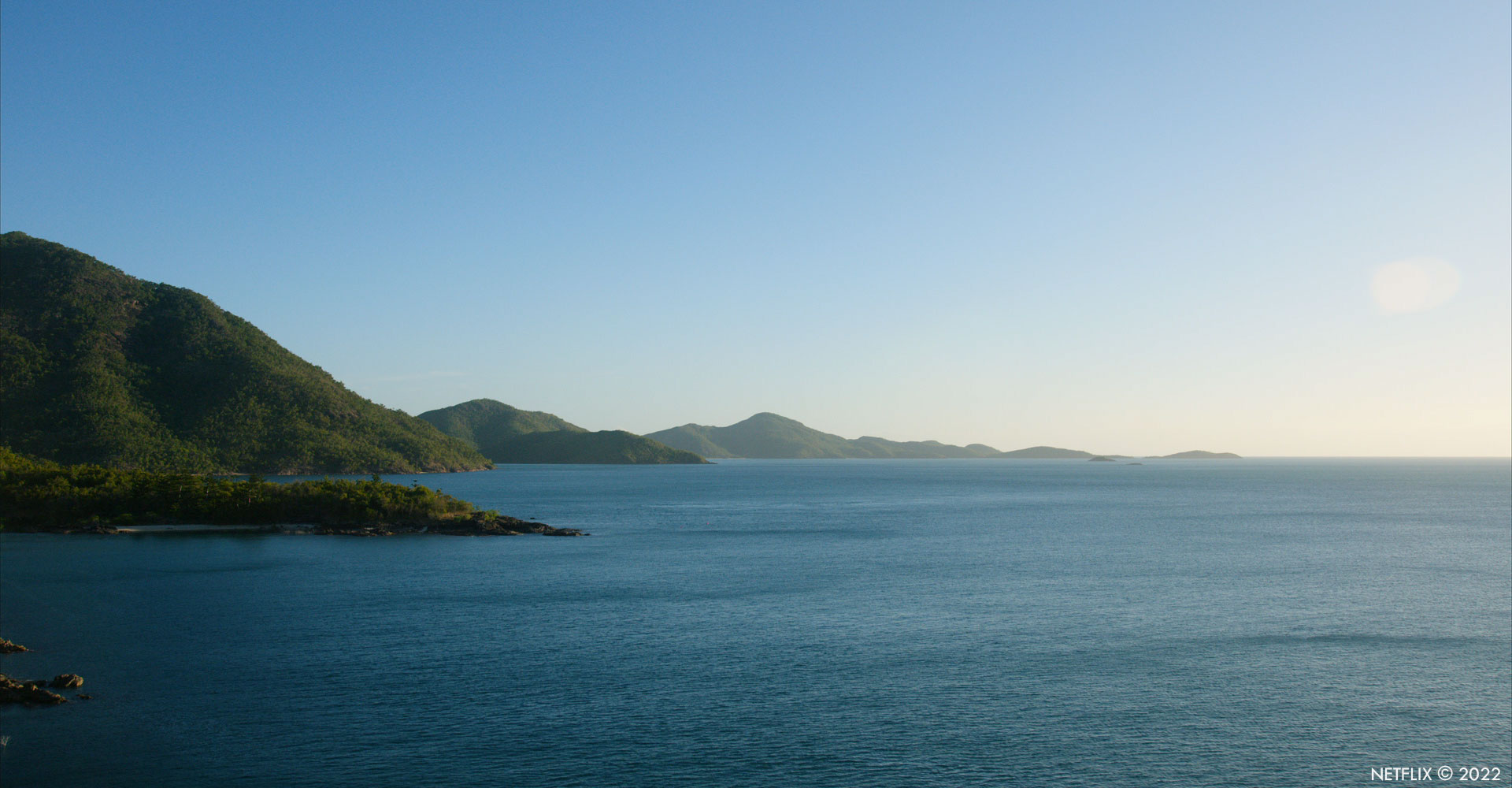

What is your best memory on this show?
It was the comradery of the team – both our internal team, but also with Ryan, Lynzi and the production side crew. While it wasn’t the biggest project in terms of volume of work, we were on a pretty tight schedule so had to be really efficient and get to the creative goals quickly, which I feel like we achieved through that level of teamwork.
How long have you worked on this show?
We worked on it for about 8 months in total.
What’s the VFX shots count?
We completed about 160 VFX shots for Spiderhead.
What is your next project?
I am currently Comp Supervising our work on the upcoming project, 65 starring Adam Driver and Ariana Greenblatt.
What are the four movies that gave you the passion for cinema?
My answer to this would probably change every week! So many films, for so many different reasons. Whether it’s the childhood escapism of films like Back to the Future or Tron, the captivating story telling of The Godfather, films that provoke thought like Fight Club, or films that really elevate the cinematic experience, like the recent Dune, I’m constantly being inspired! (See I couldn’t even limit it to 4!)
A big thanks for your time.
WANT TO KNOW MORE?
Framestore: Dedicated page about Spiderhead on Framestore website.
Netflix: You can watch Spiderhead on Netflix.
© Vincent Frei – The Art of VFX – 2022






